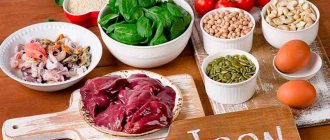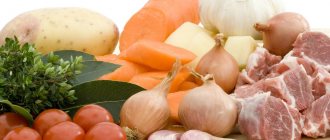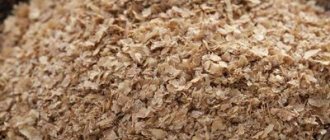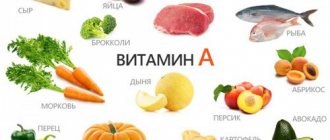Strong bones and teeth: how one of the most essential macronutrients helps us
The main function is participation in the formation of bone tissue. It contains a larger amount of substances on which the harmonious development and functioning of the body depends. Ca is also involved in blood clotting, helps normalize heart contractions, participates in the intracellular delivery of nutrients, and is responsible for regulating the ratio of acid and alkali.
Calcium is called a structural element for a reason - it can be compared to a stone that is embedded in a wall. It maintains the health of our teeth, bones, and strengthens nails. In our body it is presented in two forms. The first is usually called free, and the second bound. If free form Ca reserves are close to zero, we begin to obtain it from bone tissue.
Another important property of this substance is that it helps strengthen the connective tissues of cells and improves our immunity. So you definitely need to drink milk, kefir, and fermented baked milk. But are they the only ones that contain this element with the prefix “macro”?
Almond
If you are wondering which nuts are high in calcium, you will certainly come across information about almonds, which have become increasingly popular in recent years and are now more easily available in many places. They contain slightly less protein than peanuts, but make up for it with other nutrients, and can be an ideal snack for people looking for a healthy, protein-rich alternative to potato chips or pretzels.
Each 100g of almonds contains 579 calories and has the following nutritional profile:
- protein: 21.15 g
- fat: 49.93 g
- carbohydrates: 21.55 g
- fiber: 12.50 g
- sugar: 4.35 g
Most of the fats in almonds are monounsaturated fats; it is also rich in vitamins and minerals such as:
- calcium: 269 mg
- iron: 3.71 mg
- magnesium: 270 mg
- phosphorus: 481 mg
- potassium: 733 mg
- vitamin E: 25.63 mg
What foods contain a lot of calcium?
Before we talk about them, let's talk about the conditions under which Ca will be absorbed best. Let us immediately note what blocks the breakdown processes: food containing oxalic acid. If you eat it and at the same time consume cottage cheese, milk, kefir, you will face the problem of sparingly soluble salts, which can remind you of urolithiasis and are deposited in the intervertebral discs.
It is useful to combine foods containing large amounts of calcium with fatty acids. However, certain precautions must be observed: do not get carried away. Why? The problem is that both a lack and an excess of fat in the body negatively affect the absorption of an important macronutrient - it slows down.
Another tip: add foods rich in vitamin D to your menu. This is another helper of Ca, which helps it get into cells and take part in a number of complex processes. It can be formed under the influence of sunlight, but it is also necessary to obtain it from the diet. Here are the foods that contain calciferol:
- Eggs are one of the simplest and most accessible sources. The concentration of the beneficial substance is especially high in the bright yolk. However, eating too many eggs is harmful because they are high in cholesterol.
- Beef liver is another guest on our table, which contains vitamin D, which helps in the absorption of Ca. And the liver also contains iron and protein - a new argument in favor of inclusion in the diet.
- Soy milk - a cup of this drink has a high content of calciferol. It also contains incredibly useful vitamin C.
- Tuna, salmon - these types of fish are rich not only in the “sun” substance, but also in polyunsaturated fatty acids - a good help for the complete absorption of calcium.
Also, don’t forget about magnesium and phosphorus - they are also vital for obtaining an important macronutrient in full. There are many of them in all kinds of beans, whole grain bread, soybean curd, and cocoa.
Now let's turn to foods that are high in calcium and have great benefits for our health.
- Green leafy vegetables – cabbage comes first. You can safely add Beijing, broccoli, Brussels sprouts to your diet - the treasured Ca will be there everywhere.
- Nuts - you didn’t know, but they also contain building material for nails, teeth, and bones. By the way, they perfectly help the absorption of macronutrients. We all know that these fruits contain a lot of fat under the hard shell. That's what we need. Record holders for the content of useful macronutrients are Brazil nuts and almonds.
- Various seeds - if you were looking for which foods contain calcium and are richest in it, and expected to see only milk and cottage cheese on the list, you will be surprised, because even poppy and sesame seeds contain this valuable substance. You can add them to healthy baked goods made from amaranth flour, and if you are fasting, they will make good milk.
- Wheat – especially high in Ca in bran. But if you decide to look for a macronutrient in premium flour, you’ll just be wasting your time - it’s not there. As in white bread. It’s better to take whole grain bread or buy a good alternative to the usual crust – amaranth bread.
- Tofu - some call this product soy curd, others call it cheese. But whatever you call it, the fact remains: it contains calcium (about 105 mg per 100 g). It is also very good for those losing weight because it contains few calories.
- Herbs - it turns out that they also contain this macronutrient. Most of it is found in parsley. Other herbal ingredients in our menu are not far behind: dill, basil, oregano, mint, nettle.
- Molasses – one teaspoon contains approximately 170 mg Ca. This is no joke: it is also found in sweets. However, we still recommend choosing the beneficial combination of maltodextrin and stevia extract over thick starch syrup.
Also, do not forget about cottage cheese, milk, yogurt, kefir. These are the main sources of useful macronutrients on your table. Lactose, which is part of these components of a healthy diet, helps the valuable substance to be quickly and fully absorbed.
So, we found out which foods contain calcium, and gave a list to explain exactly where it is found. Many discoveries can be called unexpected: it is difficult to imagine that the building material for bones and teeth is found in herbs or seeds. There is a lot of it in figs, green beans and even turnip leaves.
Watercress, savoy cabbage, pistachios, shrimp - all these are irreplaceable sources of Ca in our diet. Below is a table listing foods that contain large quantities of calcium. Check yourself: are they all on your table?
Even if you don’t eat all of the above regularly, there is no reason to worry if you regularly drink a glass of kefir or milk, often buy cottage cheese, red fish, and like green vegetables. In this case, all you have to do is ensure that the macronutrient that enters your body is absorbed correctly. We have already told you which combinations are preferable.
It is not difficult to guess that Ca should help us not only throughout life, but also when life is just beginning. This is exactly what we will talk about next.
Eliminating shortages
Eggshells are 90% calcium carbonate. The body completely absorbs it and converts it into calcium phosphate, which strengthens bone tissue and teeth. The shell also contains phosphorus, copper, zinc, iron, and manganese.
Recipe 1:
- Wash the raw egg, boil the shell for 15-20 minutes, peel off the film. Dry and grind in a coffee grinder.
Use the shells of 3-5 eggs at a time. Afterwards take 1 tbsp. fish oil rich in vitamin D.
Recipe 2:
- Get powder from the shells of three eggs.
- Pour in the juice of one lemon.
- Place on the bottom shelf of the refrigerator until dissolved.
Take 1 tsp. twice a day. The acidic composition facilitates the absorption of the element in the intestines.
Instead of lemon juice, you can use cranberries or other sour berries. To improve the taste, add 1 tbsp. honey
How does calcium deficiency manifest in the body during pregnancy: symptoms
Experts say that in approximately 17% of cases, calcium deficiency may occur several months before the baby is born. The signs are:
- It feels like goosebumps are crawling all over your body.
- Short-term convulsive twitchings are observed.
- Often cramps the leg muscles.
- A young mother may complain of bone pain.
Most often, these symptoms occur in pregnant women who have suffered complications (preeclampsia). The situation becomes worse with unbalanced and poor nutrition, in spring and winter. By the way, it is during the gloomy and dank months that the concentration of Ca in the blood is lowest, as is the “sunny” vitamin D.
Calcium deficiency can lead to adverse effects:
- increased fragility of bones, their deformation;
- development of complications;
- frequent muscle pain;
- convulsive conditions;
- toxicosis.
For a child, this situation is no less dangerous than for a woman in labor:
- Leads to rickets.
- May cause growth retardation.
Changes in mineral metabolism should not cause a deterioration in the mother's well-being. It is also necessary to prevent their negative impact on fetal development. To do this, create the right diet, be sure to include foods rich in important macronutrients. Every day, be sure to consume either 200 g of cottage cheese (choose one with medium fat content), or a glass of kefir/milk, or about 50 g of low-fat cheese. This is a good protection against the possible consequences of a lack of a valuable substance.
It is also worth including nuts (Brazil, walnuts), cabbage (broccoli, Chinese cabbage), other green vegetables, berries, shrimp and fish in the menu.
And don’t forget: you also need to prevent vitamin D deficiency. Be outside more often, bask in the sun.
Cashew
Cashews have a creamy texture that makes them a great addition to many meals and snacks.
100g cashews contain 553 calories and the following nutrients:
- protein: 18.22 g
- fat: 43.85 g
- carbohydrates: 30.19 g
- fiber: 3.30 g
- sugar: 5.91 g
Most of the fats in cashews are monounsaturated fats.
Important vitamins and minerals in cashew nuts include:
- calcium: 37 mg
- iron: 6.68 mg
- magnesium: 292 mg
- phosphorus: 593 mg
- potassium: 660 mg
Why calcium is not absorbed in the body and how to explain its deficiency
It comes in insufficient quantities
Most people who are accustomed to eating in a hurry, on the run, hastily swallowing donuts, pies, hamburgers and other fast food products suffer from this problem. This food lacks both Ca itself and other important micro- and macroelements - its helpers. So the first thing to start with is changing your diet.
Another reason for insufficient calcium intake in the body is the wrong combination of menu components. All useful substances work in some ligaments, but interfere with each other in others. If you consume little selenium, iodine, silicon, magnesium, phosphorus, or take multivitamins erratically, be prepared for the fact that you will sooner or later develop deficiency symptoms.
Its absorption is reduced
Various reasons can lead to this. These include gastritis, stomach ulcers, the presence of excessively fatty foods in the diet, consumption of food high in oxalic acid, and lack of vitamin D. Often the concentration of a macroelement in the blood decreases during menopause, with physical inactivity, and taking diuretics. It is important to find the source of the problem. Only after this is it possible to resolve it.
Increased elimination
Treatment with laxatives and diuretics, bowel cleansing with enemas, and kidney disease can lead to this. After all, it is in the kidneys that vitamin D is converted into a form that allows calcium to be absorbed without problems. This is what removes calcium from the body. Your task is to prevent loss.
Something leads to increased macronutrient consumption
Most often, reserves of an important substance melt by leaps and bounds during pregnancy and lactation, with injuries and fractures, and stress.
These are the main reasons for poor absorption of calcium from food. Take care of your health. Eat right, don’t try to lose weight by taking laxatives and diuretics, move more, spend more time in the sun and fresh air.
Norm
Every day, with food, an adult should receive up to 1 g of calcium, a child – up to 0.8 g.
Up to 0.75g of unused element leaves the body during bowel movements, 0.2g - with sweat and urine.
The norm takes into account that the daily diet of Russian residents includes all kinds of dairy products.
The diet of residents of countries with low milk consumption is dominated by other foods containing calcium: cereals, fruits, vegetables, meat.
For example, in India, Japan, Turkey, the recommended daily intake is 0.35g.
Products that leach calcium and increase its content
First, let's talk about what prevents us from replenishing reserves of valuable macronutrients:
- Salt – its increased consumption leads to weakening of bone tissue.
- Soda contains phosphoric acid, which leads to an imbalance of acid and alkali.
- Vitamins (especially A) - their indiscriminate use and excess help reduce the concentration of calcium in all tissues of the body.
- Coffee - just drinking one cup of an invigorating drink is enough to deprive yourself of 6 mg of Ca.
- But there are also products that increase the content of the element - we have already talked about them. These are milk, cottage cheese, green vegetables, soybeans and its derivatives, fish.
Little is bad, but too much is no better. Next we will talk about the condition that occurs when more bone building material is obtained than needed, its symptoms and dangerous consequences.
Hazelnut
Hazelnuts have a special taste, which makes them a favorite in sweet foods. They contain less protein than other nuts, but may compensate with other health benefits: for example, hazelnuts may help lower cholesterol levels, according to a study published in the Journal of Clinical Lipidology.
100 g of hazelnuts contain 628 calories, plus the following:
- protein: 14.95 g
- fat: 60.75 g
- carbohydrates: 16.70 g
- fiber: 9.7 g
- sugar: 4.34 g
This protein and fat content makes hazelnuts more similar to walnuts than other types of nuts.
Most of the fats in tree nuts are monounsaturated, but they also include some polyunsaturated and saturated fats. Hazelnuts also contain the following components:
- calcium: 114 mg
- iron: 4.70 mg
- magnesium: 163 mg
- phosphorus: 290 mg
- potassium: 680 mg
Beneficial features
All metabolic processes in the human body are interconnected and balanced. An important macronutrient has a positive effect on the condition of bones, teeth, nails, hair and skin. From childhood it is important to know what contains a large amount of calcium. A deficiency of this substance can not only lead to a deterioration in appearance, but also cause the development of severe pathologies.
Beneficial properties of calcium for the human body:
- The substance acts as a building material for bone tissue.
- The element participates in cellular metabolic processes.
- Calcium improves muscle activity and coordination of movements.
- The macroelement restores the immune system, increasing the body's resistance to various infections.
- The substance cleanses blood vessels, reduces their permeability and eliminates cholesterol plaques.
- The element improves the condition of hypertension.
- Calcium has an anti-inflammatory effect.
- It stabilizes the functioning of the nervous system.
- The macroelement can reduce appetite and increase the feeling of satiety, so products with it are included in weight loss diets.
WHAT PRODUCTS CONTAIN CALCIUM
The mineral is necessary for the active growth and development of children's bodies. The substance serves as support and support for bones and joints. The macronutrient helps form the skeleton and teeth.
During pregnancy and lactation, women often experience a lack of calcium, which affects the health of their nails and hair. In addition, its deficiency causes pain in the lumbar spine and a lack of milk when feeding the baby.
Calcium is also important for men's health. The substance prevents osteoporosis, scoliosis, joint diseases and allergic reactions. It is also important for conception: a lack of the element can cause male infertility.
How to speed up absorption?
An interesting fact is that products containing calcium do not provide the expected result without the intake of another element into the body - vitamin D. Scientists have proven that the absorption of Ca directly depends on the intake of the mentioned substance. This is why it is often recommended to spend time in the sun to strengthen your immune system and bones.
Replenishing your diet with vitamin D reduces the risks of rheumatism, periodontal disease, problems with blood clotting and the nervous system. Almost all of its volume comes with the sun's rays. The most beneficial tanning is in the morning and evening hours, when the sun is most gentle on the skin.
Milk replacement
Milk is considered the record holder for calcium content. But some try to replace it with other sources of useful mineral. For example, strict vegetarians do not consume any animal products. There are also people with lactose intolerance, in which case it is necessary to eat products with a plant-based milk fat substitute.
The best solution is almond milk. One glass of drink contains up to 90 g of essential macronutrients. Plant products are also suitable, from which calcium is also well absorbed. These can include calcium-containing fruits, raw and leafy vegetables, seeds, cereals and soy milk.
A large amount of calcium has also been found in cabbage. The mineral in which it is rich is absorbed better than from milk. But you can only get the required daily dose of the element with a large volume of vegetables.











